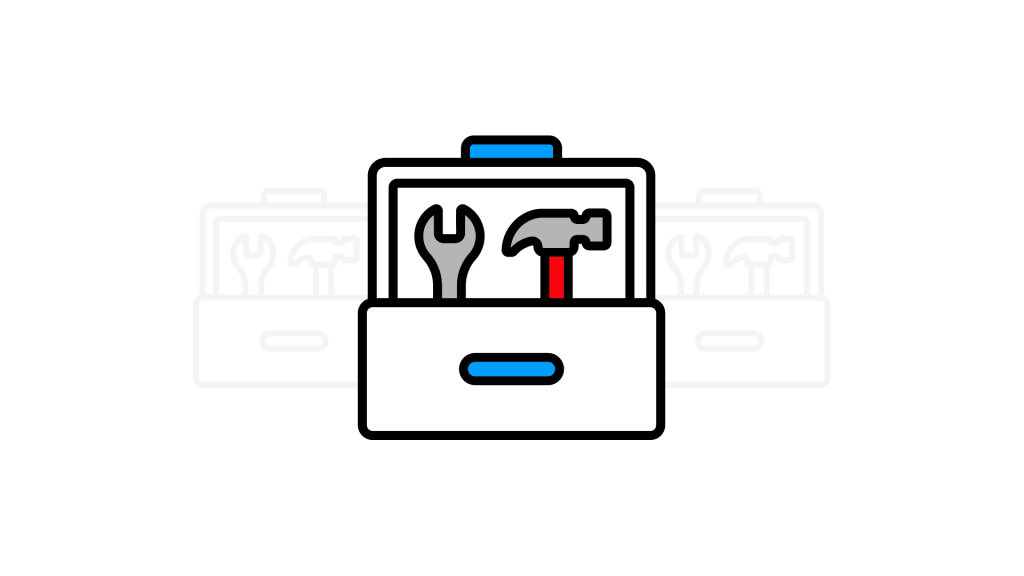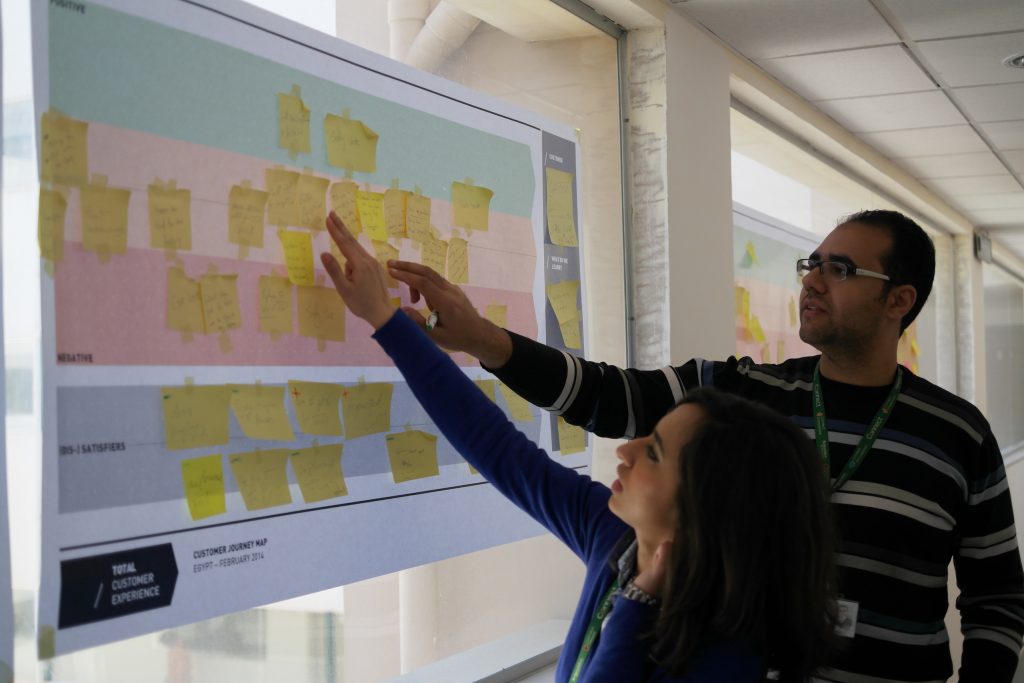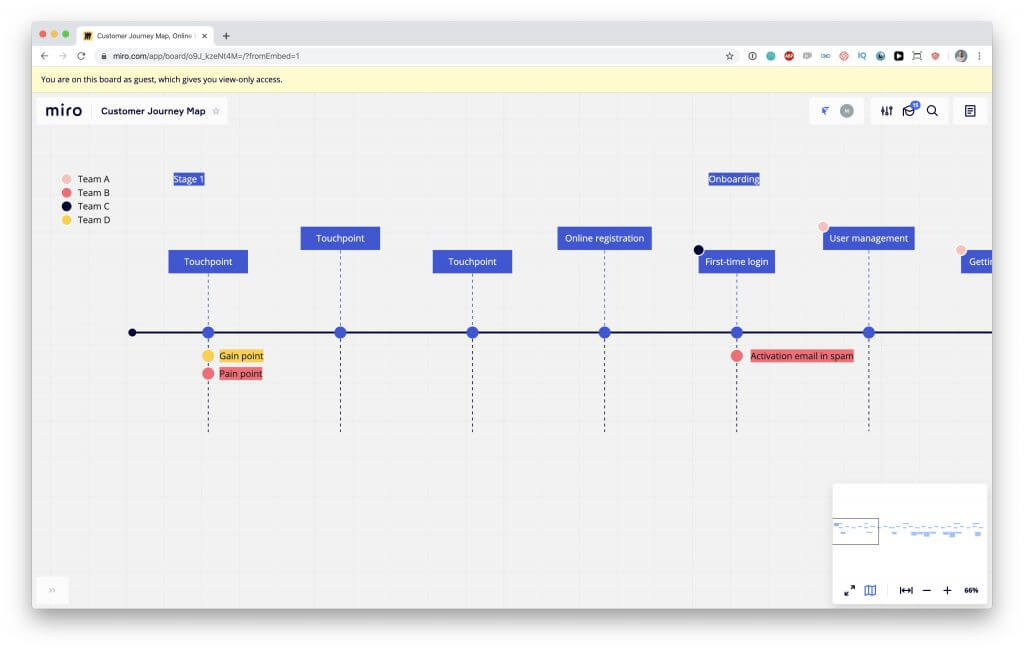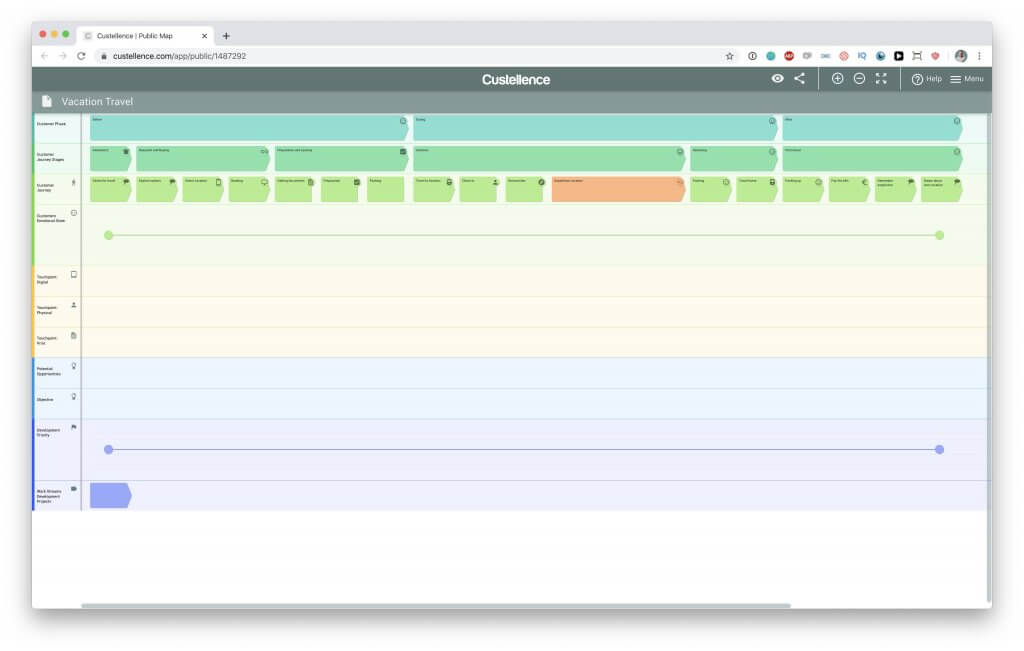The pros and cons of the most popular journey mapping tools and how to find right tool for your next project.
Published in: Journey Mapping / Last update: 21 May 2020

Still not sure about which journey mapping tool you should use in your next project?
I feel you. Over the years, I've tried all the different flavors.
I went from journey maps made from sticky notes to fancy posters created in Illustrator or InDesign.
I've also had my fair share of dealing with "journey maps" created using PowerPoint and, yes, sometimes even Excel. I still get chills when I think of those!
The number of journey mapping tools you have at your disposal as a customer experience professional is growing each and every day.
So how do you pick the journey mapping tool that perfectly fits your specific challenge?
Let's sort this out once and for all in this single guide.
In this guide you'll learn about the pros and cons of the different journey mapping tools out there and how to find the best tool in your situation.
If you care about being able to explain to your peers why you've chosen a specific tool, I recommend that you read through the guide starting from the top. It will help you formulate a grounded opinion.
But if you're here to learn about one specific type of tool, just use the Table of Contents to jump right to it.
I can't stress enough how important it is that you understand the real implications of using each of the different tools.
Picking the wrong journey mapping tool because it looks nice or because you already know how to use it will, in the short term, potentially lose you time and in the long term, your career.
The goal of this guide is to help you make a more informed and deliberate decision.
Before you start
If you're like me, you want to jump straight into the tools. But we first need to discuss something that will make your choice of the right tool infinitely easier.
Before you start thinking about the tools, you have to have a very clear answer to this question:
Why am I making this journey map?
It's really important that you're able to answer this question. If you need some inspiration here are 5 smart reasons why organisations invest in customer journey maps.
Remember, at all times, a tool will amplify what we're already doing.
If we're doing the right things, then a tool has the potential to save us time and increase the quality of our work.
But if we're doing the wrong things (e.g., journey mapping for the wrong reasons) a tool will only make our problems bigger and help us get there faster... 😉
So, assuming that you know exactly which goal you're trying to achieve with your journey map, let's dive into the different tools at your disposal.
1. Offline analog tools
These are most likely the tools you're already familiar with. Images of people in rooms filled with what seems like a never-ending stream of sticky notes come to mind. We've all been in that room. 🙂
Sticky notes, markers, brown paper and whiteboards. These tools have become the poster children for customer journey maps, which isn't a bad thing per se. We'll get to the list of pros in a second.
It's hard to estimate how much brown paper I've used over the years, but I'd say that it would have to be measured in kilometers rather than meters. The sticky notes must run into the thousands.
I've used these tools extensively, and to this day, there are many situations in which I'd take a sticky note over a more advanced digital journey mapping tool.
We won't go into which brand of sticky notes or markers are the best in this guide. But the short answer is: Yes, there's actually a big difference between the brands.
From my personal experience, it's totally worth investing in premium brands, unless you want to be picking up sticky notes off the floor every 5 minutes.

Analog journey mapping tools: sticky notes, makers and some sheets of paper.
Pros
Cons
When to use an analog journey mapping tool?
With all those cons, you might wonder if it still makes sense to use these analog tools at all. I think it does.
There are two scenarios where these would be my go-to journey mapping tools:
1. To teach about journey mapping and explain the concepts. When you're teaching, the actual journey map you create in that process is a byproduct. You will probably throw the map in the trash once you’re done. In this case, the pros outweigh the cons by a large margin.
Using anything more complicated than these analog tools just adds unnecessary distraction to the educational message you want to get across. To teach about journey mapping and explain the concepts.
When you're teaching, the actual journey map you create in that process is a byproduct. You will probably throw the map in the trash once you’re done. In this case, the pros outweigh the cons by a large margin. Using anything more complicated than these analog tools just adds unnecessary distraction to the educational message you want to get across.
2. To kickstart a journey mapping project. In the very early stages of a project, you'll need to establish the structure of your journey map and decide which information should be there. This stage asks for a lot of brainstorming and playing around with ideas.
You need to be shuffling ideas around as fast as you can. Even with the advancement of online journey tools, from my experience, good ol’ sticky notes are still the most effective way to do this.
2. Generic digital tools
One of the main drivers to look beyond the trusted sticky notes is the desire to share our journey maps with people we don't meet across the office halls each day.
There is a clear two-fold distinction in the kinds of tools people use. We've got the graphic design crowd who favor programs like Adobe Illustrator or InDesign, while basically the rest reach for Office tools like PowerPoint and even Excel.
What these tools have in common is that they are generic, meaning they aren't designed specifically to help you create and maintain a journey map.
The primary use of these generic digital tools is to help you visualise the journey map.
The best analogy I can make is that these tools are essentially a digital whiteboard. And it's up to you what you draw on this whiteboard.
Maybe not coincidentally, a new breed of cloud-based tools like Miro (review) and Mural (review) is emerging, which literally position themselves as online whiteboards.

(Example of a journey map in miro)
Pros
Cons
When to use a generic journey mapping tool?
Although I've extensively used these tools myself in the past, I'm now very hesitant to recommend them to anyone looking for a long-term solution. It might be appealing to digitize the results of your journey mapping workshop in a few PowerPoint slides, but you'll quickly run into all sorts of limitations.
Basically, when you decide to use this kind of tool, you're committing yourself to creating a journey map just for the sake of having an overview. You're creating a one-time visualisation.
This goes against the best practice of using journey maps as your CX dashboard to drive customer-centric change because, in order to do this, your journey maps need to keep changing and evolving.
As stated often, the journey map can never be your end goal; they should always be a means to an end.
A valid reason for considering these generic tools would be if you need to create a journey map that is visually more appealing or consistent with your brand. But you should only do that based on a journey map that you've created in one of the professional tools we're going to discuss next.
3. Professional digital tools
Think about it. Most professionals have their own set of specialized tools, from construction workers to surgeons. These tools allow them to get the job done faster, with more consistency and deliver higher quality.
It's just the same with the professional journey mapping tools that you now have access to.
The rise of these journey mapping tools shows that the customer experience field has reached a certain level of maturity. We’ve slowly started to argue for the fact that it's becoming a true profession.
Yes, you probably can do most of the things these professional tools allow you to do using sticky notes or PowerPoint. It will take you much more effort, and the result won't be as good.
In essence, these professional tools allow you to spend more time driving actual customer-centric change and less time creating journey maps.
For this guide, I've looked at 3 different tools: Custellence (review), Smaply (review), and UXPressia (review coming soon).
But the number of these professional journey mapping tools is quickly growing. Tools that also fall into this category are MilkyMap, FlowMapp and TheyDo.
Although there are differences between the individual tools (watch the review videos to learn more), the pros and cons outlined below are applicable to all of them.

(A journey map in Custellence)
Pros
Cons
When to use a professional journey mapping tool?
These professional journey mapping tools are aimed at helping you drive long-term, customer-centric change. Of course, you can start small with just a single project. But when you want to move beyond that, it's not going to be the tool that's limiting you.
Using these tools, you slowly but surely start to build a central and uniform piece of truth regarding the customer experience that people in the organization can rally around. The great thing is that the more you work with this journey map, the more you'll be able to say that this is the most up-to-date representation of OUR customer journey.
So, rather than every department having their own journey map, you can now start to create something universal in the organization. This forms a great starting point for new projects and initiatives.
I'd also recommend using one of these tools when you want to create consistency across different journey maps. Consistency is essential to develop a shared language and help spread the adoption of this mindset.
Even when you just want to create a journey map as a one-time overview, I'd still lean toward using these professional tools. It just takes you less time to create this compared to most of the generic tools.
Yes, there are a lot of advantages to using these professional journey mapping tools.
But this doesn't mean they are always the right choice. Let's look at how you can select the right tool for the job in your situation.
Picking the right journey mapping tool
By now, you should have a pretty good basis to decide which journey mapping tool is right for you. But to sum it up, here's my shorthand advice:
- Go with professional digital tools when... you consider yourself a customer experience professional (to be) who wants to create better journey maps in less time.
- Go with analog tools when... you are creating a journey map in an interactive workshop with the purpose of teaching the process and explaining how it works.
- Go with generic digital tools when... you have very specific requirements that can't be met using professional digital tools, or when you like to torture yourself. 😉
Of course, there are more in-depth questions that you can take into consideration when choosing a tool:
- What is your goal? Are you creating a one-time journey map? Or, do you want to use journey maps to drive innovation efforts?
- Who will be using the journey map and the tool? Just you? Will it be non-designers? People involved in operations?
- Do you really need to go digital? Going digital is crucial when you'll be collaborating on the journey map beyond a workshop but less so when you're just teaching how journey mapping works (in this case, digital tools can even be distracting).
- Is the learning curve worth the effort? There's always an opportunity cost you need to take into account when using a tool that you're not familiar with.
I guess my most important message here is that when you select a journey mapping tool, do it with deliberation. Be mindful about the pros and cons.
Conclusion
To wrap up this guide, I want to answer the question that almost everyone asks me: So, what is the journey mapping tool you use?
After having tried all the different tools over the past decade, I've come to a personal preference.
The journey mapping tool I reach for at the time of writing is Custellence.
For me, Custellence strikes the perfect balance between giving you flexibility while at the same time providing a clear structure.
I think it's the tool that best fits the needs of most customer experience professionals at this moment.
So, if you're considering a professional journey mapping tool, definitely give Custellence a try.
Whatever tool you eventually decide to use, remember that it will always be just that—a tool.
Make sure you first have a deep understanding of what it takes to create impactful journey maps because, sometimes, the best strategy is to go slow in order to go fast.
"For years I have looked for the perfect pencil. I have found very good ones but never the perfect one. And all the time it was not the pencils but me. A pencil that is alright some days is no good another day."
-- John Steinbeck, Journal of a Novel: The East of Eden Letters
Now it's time to roll up your sleeves and start building services that your customers will love.
If you've got any questions about journey mapping tools, leave a comment down below.

2 Replies
I remain with this abstract of your amazing article:
“…Whatever tool you eventually decide to use, remember that it will always be just that—a tool.
Make sure you first have a deep understanding of what it takes to create impactful journey maps because, sometimes, the best strategy is to go slow in order to go fast…” that’s the fucking common sense in all its pure nature!!!!
“For years I have looked for the perfect pencil. I have found very good ones but never the perfect one. And all the time it was not the pencils but me. A pencil that is alright some days is no good another day.”
— John Steinbeck, Journal of a Novel: The East of Eden Letters
What a quote, I feel very identified with that quote, and it’s completely true!
Now it’s time to roll up your sleeves and start building services that your customers will love.
Yeah definitely we gotta choose the journey map according to the service we wanna develop and start doing that to create useful services to satisfy people’s needs and help them.
Hi there, i recently built a customer success lifecycle map in Miro which might be of interest to your subscribers. https://miro.com/miroverse/sideways-funnel-customer-success-lifecycle/
Cheers
Chris
betaChris.com